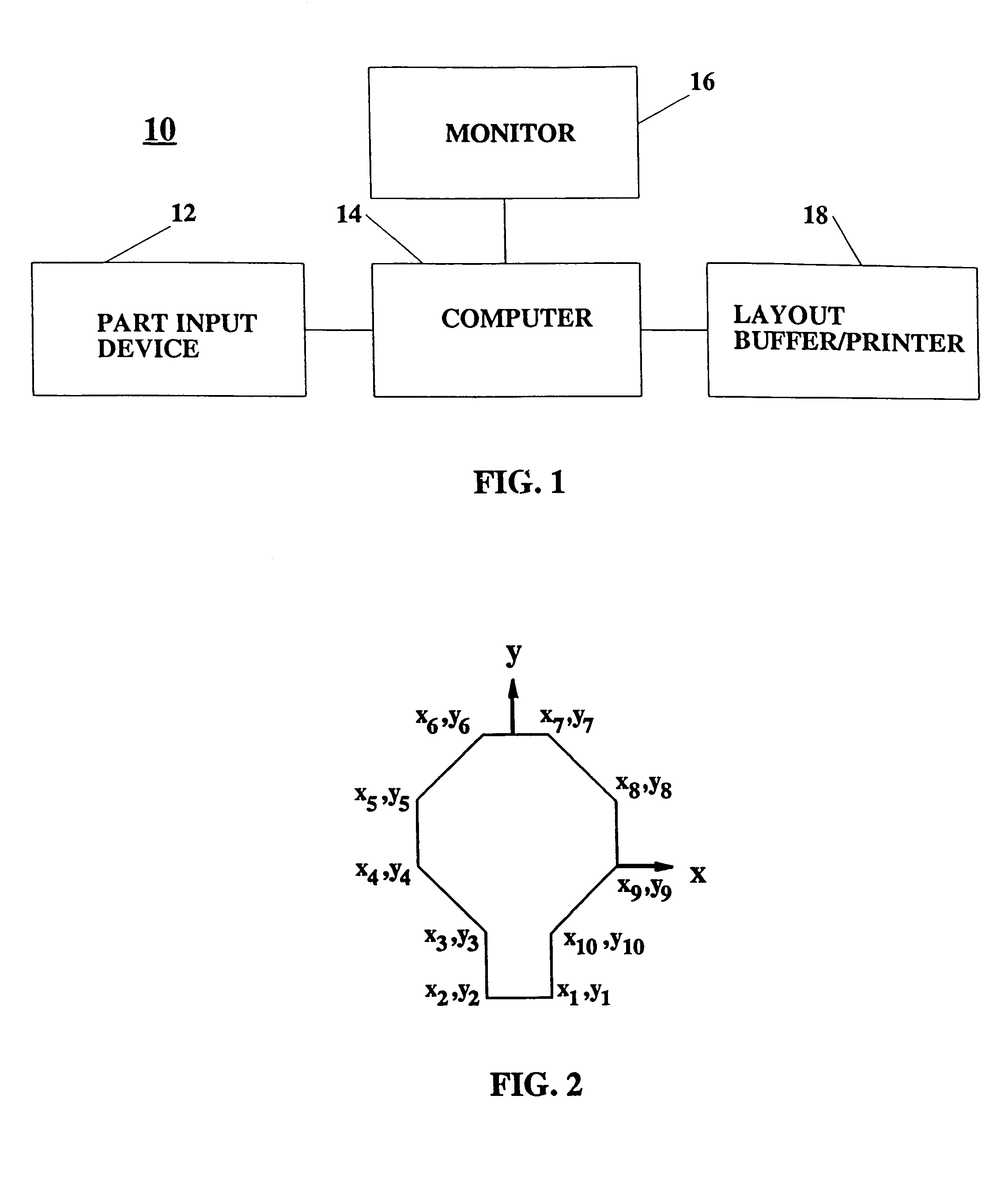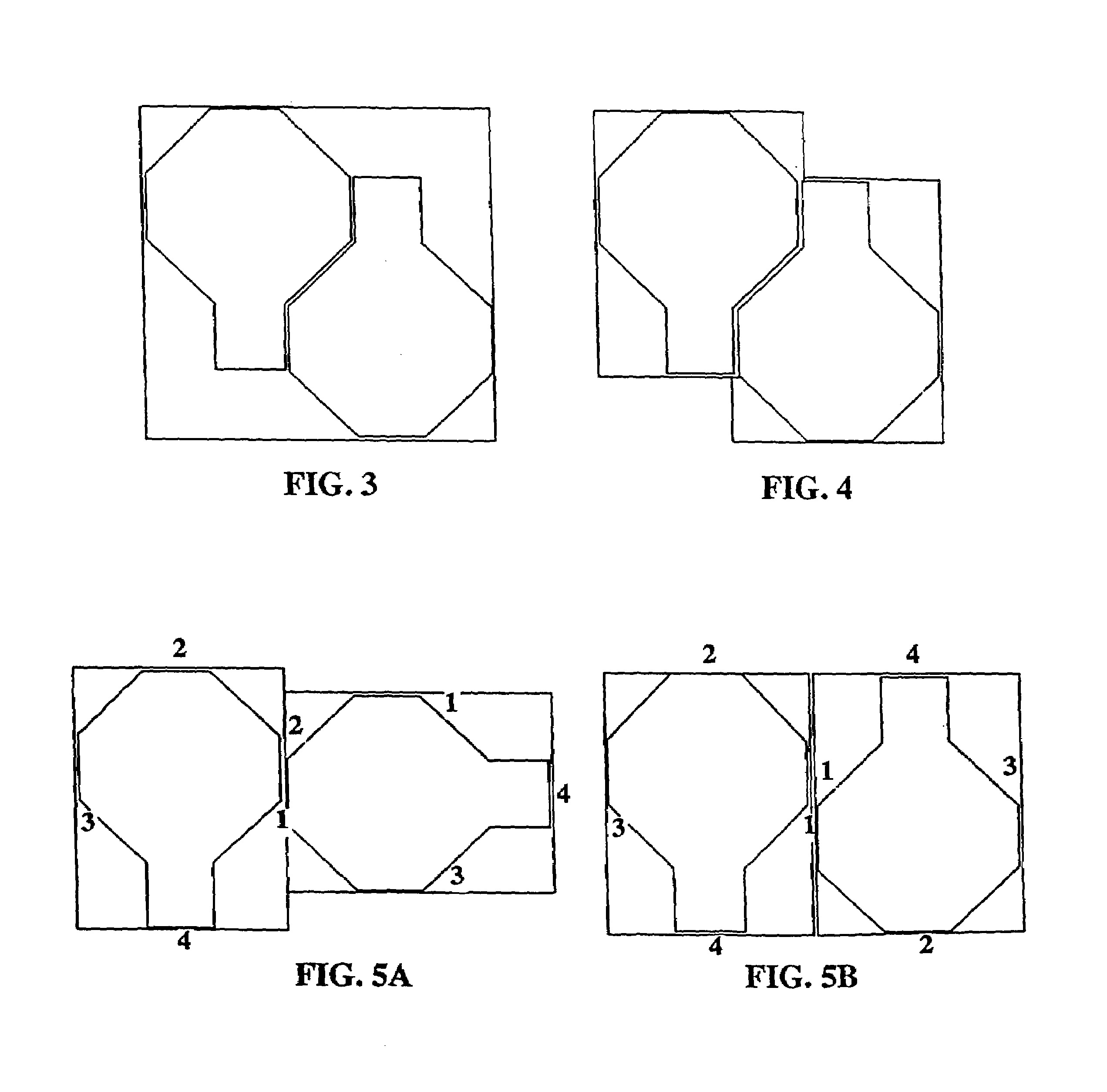Method and systems for nesting objects
- Summary
- Abstract
- Description
- Claims
- Application Information
AI Technical Summary
Benefits of technology
Problems solved by technology
Method used
Image
Examples
example 1
Layout Results Vs Number of Nests / PTiles Kept
[0257]The above defined computer system (FIG. 11) and computer program was implemented for the test object 140 of FIG. 12. The number of nests and ptiles kept for passage to further stages of the computation was varied simultaneously between 5 and 50. That is, these two numbers were varied equally (Nn-pt=Npt-st). A variation from 5 to 50 represents more than two orders of magnitude variation in computation time. The programmed computer produced a layout result for only 5 nests / ptiles kept in less than a minute, whereas it produced a layout for 50 nests / ptile in approximately one hour.
[0258]The test object 140 tested is a very simple one with only a few vertices and cross-section levels to describe it. More complex parts may have typically 10 times more vertices and say 5 times more cross-sections to describe it. This fifty-fold increase in computation time means that for a small number of nests / ptiles kept, the computer processing time w...
PUM
 Login to View More
Login to View More Abstract
Description
Claims
Application Information
 Login to View More
Login to View More - R&D
- Intellectual Property
- Life Sciences
- Materials
- Tech Scout
- Unparalleled Data Quality
- Higher Quality Content
- 60% Fewer Hallucinations
Browse by: Latest US Patents, China's latest patents, Technical Efficacy Thesaurus, Application Domain, Technology Topic, Popular Technical Reports.
© 2025 PatSnap. All rights reserved.Legal|Privacy policy|Modern Slavery Act Transparency Statement|Sitemap|About US| Contact US: help@patsnap.com



